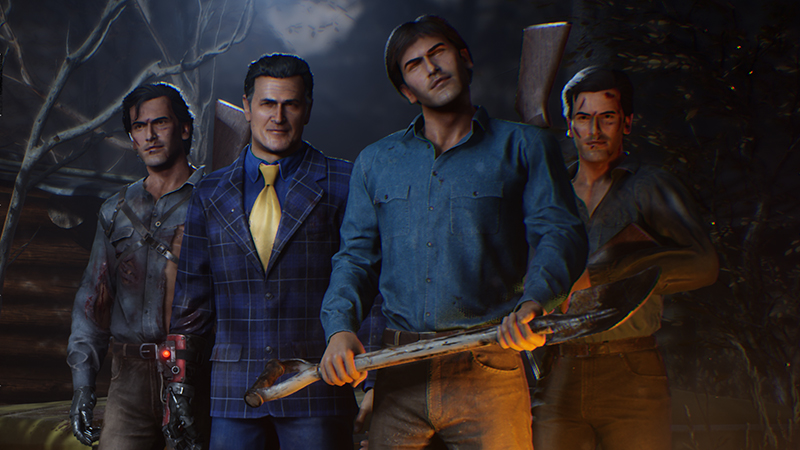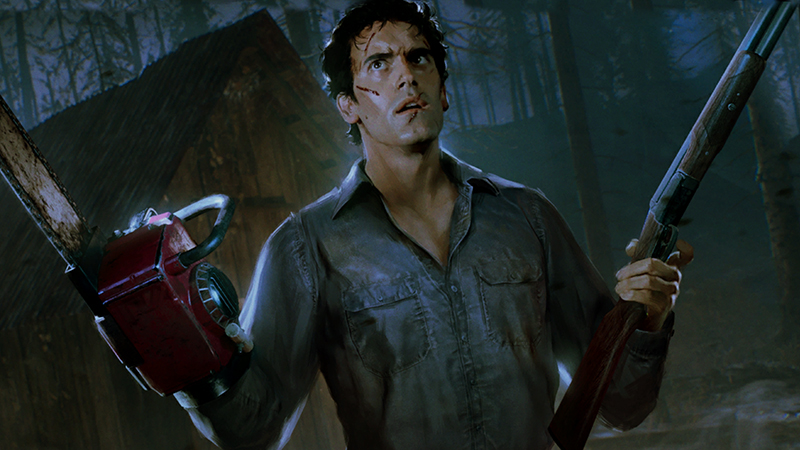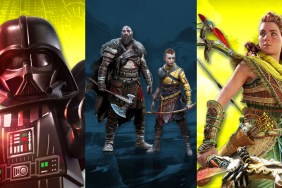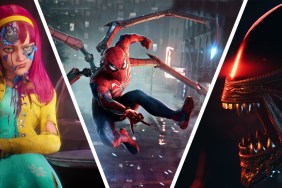It’s not hard to see why Saber Interactive made Evil Dead into an asymmetrical multiplayer game, since there are a few other horror film franchises that have already done that. But Evil Dead is not Friday the 13th, nor is it Predator, The Texas Chain Saw Massacre, or Ghostbusters. It shares the horror part of the Venn diagram with those movies, but not all of it, and those differences are why Evil Dead is a poor fit for the multiplayer space.

Evil Dead differs because it is primarily built off its protagonist instead of its antagonist. Predator, Texas Chain Saw Massacre, and Friday the 13th are all defined by their killers. There are occasional likable or iconic characters like Dutch, but the normal humans are not the main pull — Jason puts the butts in seats — and is why the few survivors rarely return for the sequels. The people are disposable and mainly there so the big bad has something to blast, skin, carve up, or bludgeon.
RELATED: Predator: Hunting Grounds Is Less Janky & More Fun 2 Years Later
This overarching focus on watching killers kill is perfect source material for a multiplayer video game since that is the premise of every match. In the original Predator, a team of humans is dropped into a jungle to do another job before having to survive against a dangerous alien beast; a setup, while simplified, that is nearly interchangeable with each Predator: Hunting Grounds game. In Friday the 13th, teens die one by one while being stalked by a masked murderer and that appeal is the draw for both the game and the films. Multiplayer games are not clouded with heavy narratives since they don’t have the means for storytelling that is more complex than killing, and the films they’re drawing from don’t ask for much more than that. Not much is lost in translation and these premises set the games up to be more faithful.

On the other hand (that also happens to have a chainsaw on it), Evil Dead is largely upheld by Bruce Campbell’s Ash, his personality, and the lore surrounding him. His cheesy and over-the-top charisma is a highlight of those films and the television series, and both work with that and succeed because of it. His delivery and mannerisms are crucial parts of the camp Evil Dead actively celebrates. The game seems to know of Campbell’s importance since he is front and center on the box art while the Deadites are barely visible in the background, which is a stark contrast to the Predator: Hunting Grounds and Friday the 13th: The Game boxes.
But the game doesn’t reflect that because it doesn’t mine that key part of Evil Dead’s identity. Campbell’s one-liners during matches are enjoyable to listen to, but are ultimately shallow and aggressively beneath the standard of what he’s able to bring to an Evil Dead film or Ash vs Evil Dead episode. He’s not sarcastically teasing his group or saying funny or badass lines, instead opting to clinically describe items or mechanics most of the time. Their mouths and faces don’t animate, either, making it even more lifeless and unlike Campbell’s usual captivating physical performances. Campbell is unable to truly be Ash because it is not a game that lets him.
RELATED: Evil Dead: The Game Review: Fail to the King
Ash’s character is primarily what drove the TV series and was bolstered by the medium’s longevity. The Evil Dead lore was expanded to dig into his character and gave him more depth without losing what made him so appealing in the first place, but it was also used as a vehicle to simply spend more time with Ash. Since the franchise is being driven by a character that can do more than mindlessly murder, it deserves a vessel that can support that. Multiplayer is not the right vessel because the general narrative framework doesn’t translate to matches in Evil Dead: The Game. Instead, the game has flattened it all down to be “killer stalks characters” to suit the genre it was forced in.

Although pulling from two different films and a series that’s (mostly) equally built on its protagonist and antagonist, there’s a reason Alien: Isolation is fondly remembered almost eight years later, and why Aliens: Fireteam Elite has been forgotten just over eight months later. Isolation was able to translate the essence and many strengths of Alien and fit it into a game structure robust enough to handle the job, while Fireteam Elite was molded into a more shallow experience that inevitably led to a one-note interpretation of Aliens. Evil Dead: The Game would have been able to be more faithful if it had been a single-player affair, since many of the franchise’s core tenets are severely limited by the many boundaries inherent to online-centric titles.
Evil Dead’s signature mix of comedy and gore is also lacking, both when taken individually and, more importantly, how they act together as a unit. Some of the finishing moves are flashy, but most of them are quite tame and repeat so often that any luster they might have dulls quickly. This is a far cry from the gallons and gallons of blood that pour out in the films and show, both of which have probably unintentionally hydrated Campbell more times than he probably remembers. Bodies and heads explode and rain crimson showers on anyone within the large splash zone and Deadites only leak out tiny ketchup packets in the game by comparison. The screen and characters do get bloody after fighting, but it’s pretty standard and a huge step down from the red geysers found elsewhere in the franchise.

This level of extreme gore is sometimes played for scares, but usually feeds into its trademark humor that Guillermo del Toro calls a “superb execution of slapstick horror.” Director Sam Raimi’s brand of horror comedy came into its own during the Evil Dead series where, as explained by film essayist Patrick H. Willems, he’s able to use the same sort of setups and payoffs in both his comedic and scary bits, sometimes in the same scene. They revel in excess and utilize Campbell’s charm and overacting brilliantly, oscillating between grossing out audiences and getting them to giggle at the absurdity. It’s Raimi’s style, but it’s also central to Evil Dead as a whole (except for the Fede Álvarez-directed remake that this game mostly ignores, which uses its gore almost exclusively for horror). Each core installment has this tone and juggles it differently, but the game doesn’t and elects to go for a drier, self-serious approach that is yet another limit of its multiplayer focus.
Because of these fundamental misfires, Evil Dead: The Game has the iconic film franchise name in the title, but not in its spirit. It’s got a nearly complete set of returning voice actors and familiar touchpoints of the series like iconic locations and the shaky cam point-of-view for the demons, but none of these elements have been compiled into a cohesive experience that fully understands what Evil Dead is. Evil Dead’s strengths are found in its gory comedy and protagonist, and are not aspects that naturally fit into an online multiplayer experience, yet the game was twisted and stripped down anyway to chase that trend. Evil Dead: The Game itself is rather poor and made of shallow systems that are a pain to repeat, but it is even more painful knowing that it is inauthentic in addition to it being lousy. It is the Kandarian Demon possessing a being, parading around in ill-fitting skin it does not understand.










